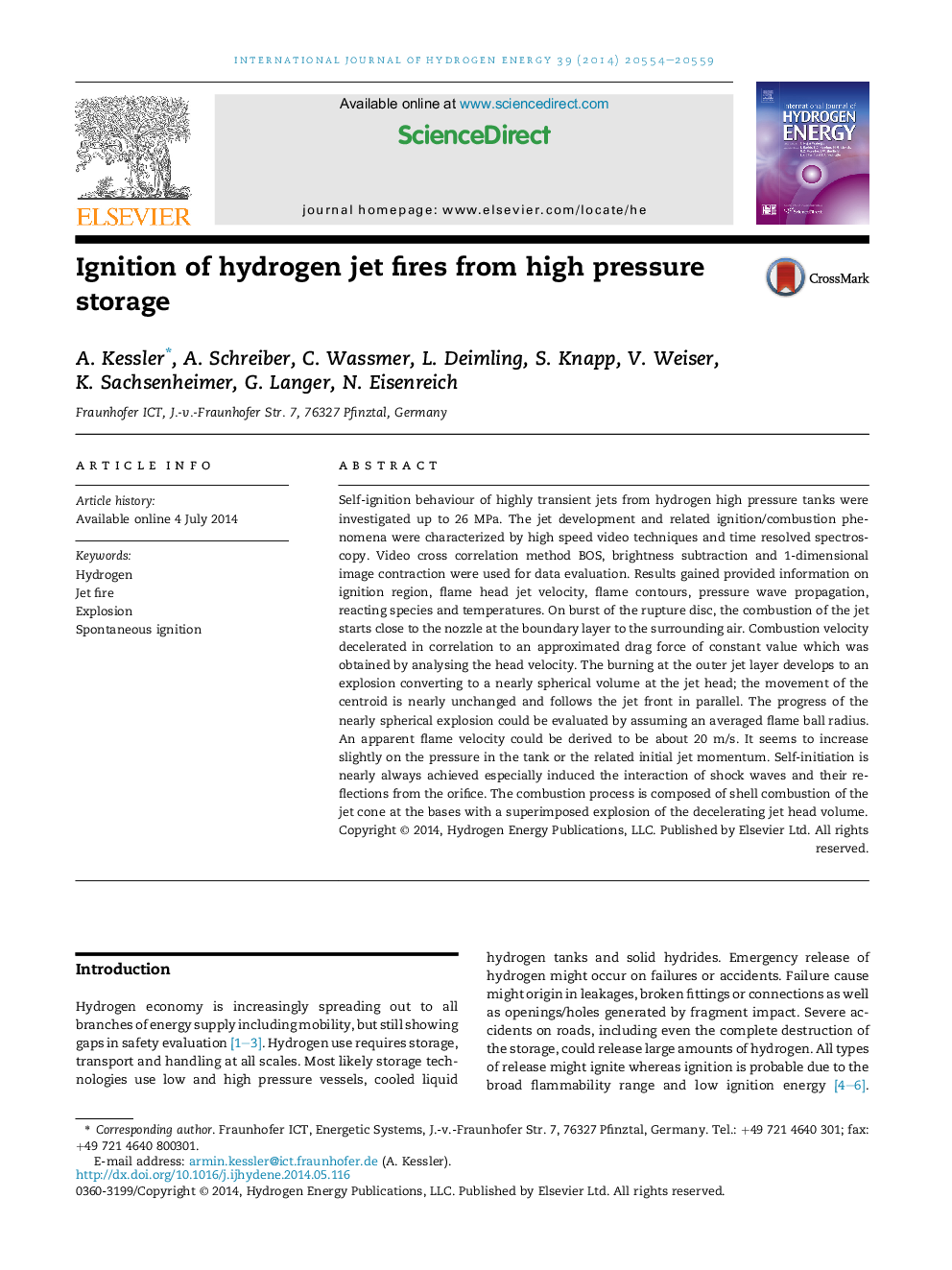| Article ID | Journal | Published Year | Pages | File Type |
|---|---|---|---|---|
| 7717984 | International Journal of Hydrogen Energy | 2014 | 6 Pages |
Abstract
Self-ignition behaviour of highly transient jets from hydrogen high pressure tanks were investigated up to 26Â MPa. The jet development and related ignition/combustion phenomena were characterized by high speed video techniques and time resolved spectroscopy. Video cross correlation method BOS, brightness subtraction and 1-dimensional image contraction were used for data evaluation. Results gained provided information on ignition region, flame head jet velocity, flame contours, pressure wave propagation, reacting species and temperatures. On burst of the rupture disc, the combustion of the jet starts close to the nozzle at the boundary layer to the surrounding air. Combustion velocity decelerated in correlation to an approximated drag force of constant value which was obtained by analysing the head velocity. The burning at the outer jet layer develops to an explosion converting to a nearly spherical volume at the jet head; the movement of the centroid is nearly unchanged and follows the jet front in parallel. The progress of the nearly spherical explosion could be evaluated by assuming an averaged flame ball radius. An apparent flame velocity could be derived to be about 20Â m/s. It seems to increase slightly on the pressure in the tank or the related initial jet momentum. Self-initiation is nearly always achieved especially induced the interaction of shock waves and their reflections from the orifice. The combustion process is composed of shell combustion of the jet cone at the bases with a superimposed explosion of the decelerating jet head volume.
Related Topics
Physical Sciences and Engineering
Chemistry
Electrochemistry
Authors
A. Kessler, A. Schreiber, C. Wassmer, L. Deimling, S. Knapp, V. Weiser, K. Sachsenheimer, G. Langer, N. Eisenreich,
